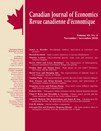Professor Nishith Prakash’s paper “Cycling to School: Increasing Secondary School Enrollment for Girls in India“, with Karthik Muralidharan, has been accepted for publication in the American Economic Journal: Applied Economics.
In this paper, the authors “study the impact of an innovative program in the Indian state of Bihar that aimed to reduce the gender gap in secondary school enrollment by providing girls who continued to secondary school with a bicycle that would improve access to school.
Using data from a large representative household survey, we employ a triple difference approach (using boys and the neighboring state of Jharkhand as comparison groups) and find that being in a cohort that was exposed to the Cycle program increased girls’ age-appropriate enrollment in secondary school by 32% and reduced the corresponding gender gap by 40%. We also find an 18% increase in the number of girls who appear for the high-stakes secondary school certificate exam, and a 12% increase in the number of girls who pass it. Parametric and non-parametric decompositions of the triple-difference estimate as a function of distance to the nearest secondary school show that the increases in enrollment mostly took place in villages that were further away from a secondary school, suggesting that the mechanism of impact was the reduction in the time and safety cost of school attendance made possible by the bicycle.
We also find that the Cycle program was much more cost effective at increasing girls’ secondary school enrollment than comparable conditional cash transfer programs in South Asia.”
Professor Prakash is following up on this work with his new project, ‘Wheels of Change: Impact of Cycles on Female Education and Empowerment in Zambia’. For more information, see Professor Prakash Studies the Impact of Bicycles on Female Education and Empowerment in Zambia



